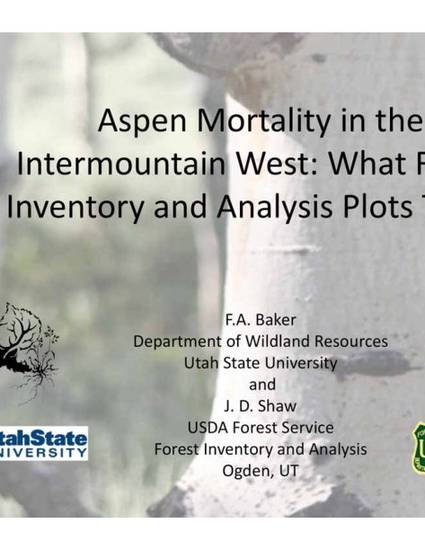
Reports of a long-term decline in area dominated by aspen forests, coupled with increased mortality attributed to long term drought, have lead to concerns of increased mortality in aspen forests. We examined data collected by USDA Forest Service Inventory and Analysis (FIA) to quantify aspen mortality. Most aspen stands in the Intermountain West are older than 80 years, a recommended rotation age for the best sites. Plot mortality rate was not related to site index or stand age. Many stands, however, have stem density greater than one would expect for self-thinning stands. At a given latitude, aspen plots with mortality were lower in elevation than those without mortality. Mortality of several coniferous species has increased in the past 6-8 years, while the rate of mortality for aspen has remained relatively constant. FIA data provide no evidence of widespread elevated mortality.
Available at: http://works.bepress.com/fred_baker/7/
